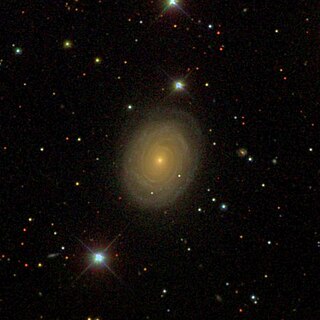
NGC 7001 is an intermediate spiral galaxy located about 300 million light-years away in the constellation Aquarius. NGC 7001 has an estimated diameter of 106,000 light-years. It was discovered by English astronomer John Herschel on July 21, 1827, and was also observed by Austrian astronomer Rudolf Spitaler on September 26, 1891.

NGC 7002 is a large elliptical galaxy around 320 million light-years away from Earth in the constellation of Indus. The galaxy was discovered by English astronomer John Herschel on September 30, 1834. NGC 7002 is also part of a group of galaxies that contains the nearby galaxy NGC 7004.

NGC 7004 is a spiral galaxy around 330 million light-years away from Earth in the constellation Indus. NGC 7004 has an estimated diameter of 166,980 light-years. NGC 7004 was discovered by astronomer John Herschel on October 2, 1834. NGC 7004 is also part of a group of galaxies that contains the nearby galaxy NGC 7002.

NGC 7015 is a spiral galaxy located about 203 million light-years away from Earth in the constellation Equuleus. NGC 7015's calculated velocity is 4,881 km/s (3,033 mi/s). NGC 7015 was discovered by French astronomer Édouard Stephan on September 29, 1878. It is also part of a group of galaxies called [CHM2007] LDC 1450.

NGC 463 is a lenticular galaxy located about 264 million light-years away from Earth in the constellation Pisces. It was discovered by French astronomer Édouard Stephan on December 16, 1871.
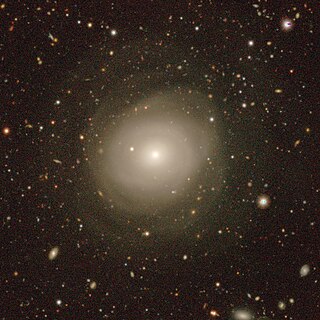
NGC 466 is a lenticular galaxy located about 227 million light-years away from Earth in the constellation Tucana. NGC 466 was discovered by astronomer John Herschel on October 3, 1836.

NGC 491 is a barred spiral galaxy located about 161 million light-years away from Earth, in the constellation Sculptor. NGC 491 was discovered by astronomer John Herschel on September 25, 1834.

NGC 480 is a spiral galaxy located about 546 million light-years away from Earth in the constellation Cetus. NGC 480 was discovered by American astronomer Francis Leavenworth In 1886.

NGC 7029 is an elliptical galaxy located about 120 million light-years away from Earth in the constellation Indus. NGC 7029 has an estimated diameter of 129,000 light-years. It was discovered by astronomer John Herschel on October 10, 1834. It is in a pair of galaxies with NGC 7022.
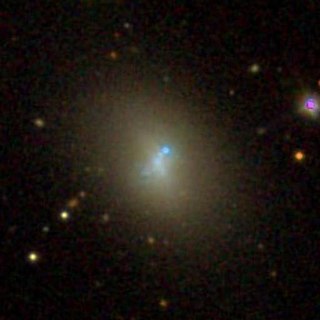
NGC 7077 is a lenticular blue compact dwarf galaxy located about 56 million light-years away from Earth in the constellation Aquarius. Discovered by astronomer Albert Marth on August 11, 1863, the galaxy lies within the Local Void.

NGC 7030 is a barred spiral galaxy located about 380 million light-years away in the constellation Capricornus. NGC 7030 has an estimated diameter of 133,510 light-years. NGC 7030 was discovered by astronomer Francis Preserved Leavenworth on September 3, 1885.
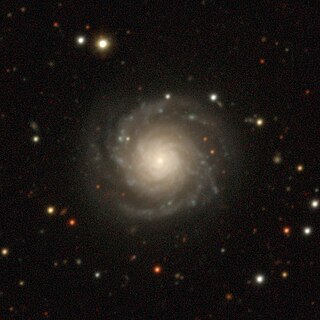
NGC 7032 is a spiral galaxy located about 140 million light-years away in the constellation Pavo. It has an estimated diameter of 71,370 light-years. NGC 7032 was discovered by astronomer John Herschel on July 20, 1835.
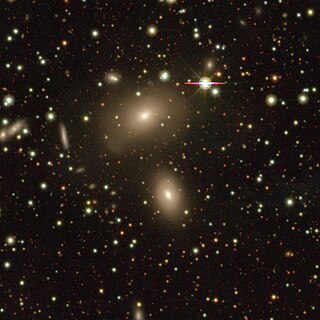
NGC 7033 is a lenticular galaxy located about 390 million light-years away in the constellation of Pegasus. It is part of a pair of galaxies that contains the nearby galaxy NGC 7034. NGC 7033 was discovered by astronomer Albert Marth on September 17, 1863.
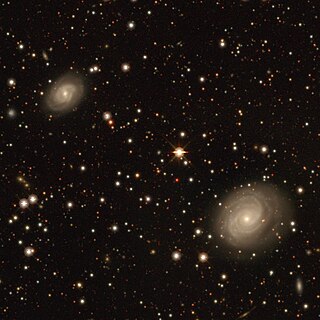
NGC 7042 is a spiral galaxy located about 210 million light-years away in the constellation of Pegasus. NGC 7042 is part of a pair of galaxies that contains the galaxy NGC 7043. Astronomer William Herschel discovered NGC 7042 on October 16, 1784.

NGC 7047 is an intermediate spiral galaxy located about 270 million light-years away in the constellation of Aquarius. NGC 7047 is also classified as a LINER-type galaxy. NGC 7047 has an estimated diameter of 127,350 light years. It was discovered by French astronomer Édouard Stephan on August 20, 1873. In 2009 a supernova was found in NGC 7047.

NGC 7051 is a barred spiral galaxy located about 100 million light-years away in the constellation of Aquarius. It was discovered by astronomer John Herschel on July 30, 1827.

NGC 7068 is a spiral galaxy located about 215 million light-years away in the constellation of Pegasus. NGC 7068 was discovered by astronomer Albert Marth on November 7, 1863.

NGC 4753 is a lenticular galaxy located about 60 million light-years away in the constellation of Virgo. NGC 4753 was discovered by astronomer William Herschel on February 22, 1784. It is notable for having distinct dust lanes that surround its nucleus. It is a member of the NGC 4753 Group of galaxies, which is a member of the Virgo II Groups, a series of galaxies and galaxy clusters strung out from the southern edge of the Virgo Supercluster.
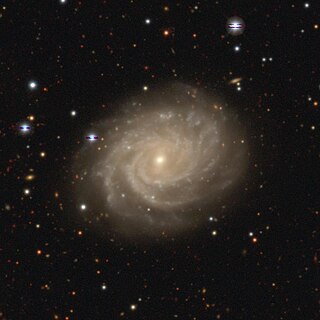
NGC 3336 is a barred spiral galaxy located about 190 million light-years away in the constellation Hydra. It was discovered by astronomer John Herschel on March 24, 1835. NGC 3336 is a member of the Hydra Cluster.

NGC 918 is a barred spiral galaxy in the constellation Aries, about 67 million light years from the Milky Way. It was discovered by John Herschel on Jan 11, 1831.



















